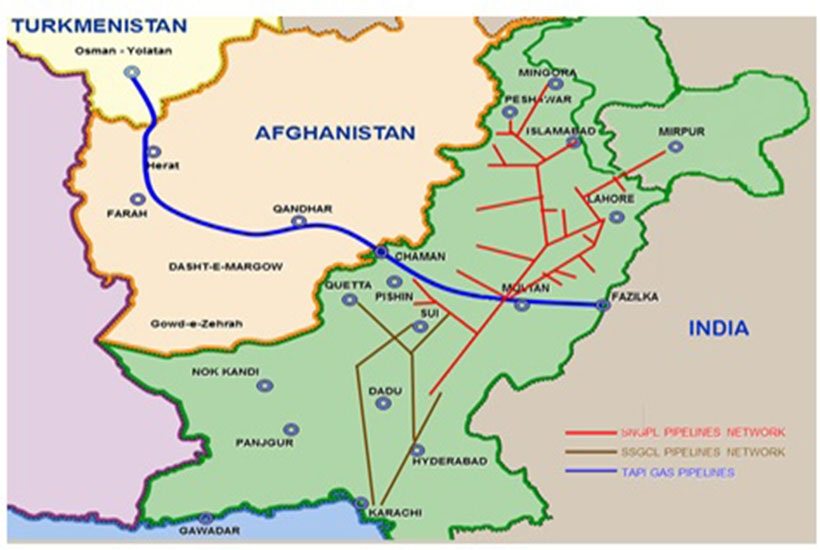China interested in joining TAPI pipeline project: Pakistan Official
ISLAMABAD (Reuters) - China is exploring building a spur from Pakistan's territory once the multi-country TAPI natural gas pipeline project begins operating, a Pakistani official said, with the financial close of the project's first phase expected next month.
Originating at the giant Galkynysh gas field in Turkmenistan, the $9.6 billion TAPI (Turkmenistan, Afghanistan, Pakistan and India) pipeline involves the four countries' own energy companies, and would carry 33 Bcm of gas a year.
Turkmenistan is building the TAPI pipeline to diversify its gas exports, which have mostly gone to China. But the project has suffered lengthy delays due to difficulties obtaining financing and the security risks of building a pipeline through war-torn Afghanistan.
Mobin Saulat, the chief executive officer of Pakistan's state-owned Inter State Gas Systems (ISGS), told Reuters that Chinese officials have shown growing interest in building a spur from Pakistan and the line could act as an alternative to Beijing's plans to build a fourth China-to-Turkmenistan pipeline.
"With this channel, there is a possibility they don't have to do another line and they can off-take from this pipeline which is passing through Pakistan," Saulat said.
A China-to-Turkmenistan line has to cross several Central Asian mountain ranges and Saulat said it would be cheaper and easier for China to built a line from inside Pakistan's territory to cross the Karakoram range to its Western border.
China's ties to Islamabad have deepened in recent years as Beijing has pledged to fund $57 billion in infrastructure as part of its Belt and Road initiative, including power stations and transport links.
Facing more delays, TAPI countries have changed tack to attract financing and make progress in the past two years. The project is now due to be done in two phases, with the pipeline built without compressors in the first phase, which would cut gas volume but would reduce prohibitive project costs.
Once gas starts flowing, and the pipeline begins generating cash flow, financing would be raised for the second phase that would see 11 compressors installed along the 1,814 km (1,127 mile) pipeline project.
"With this introduction of the phased approach, it has gained momentum with the Chinese," said Saulat.
The financial close for the first phase is due by the end of September, Saulat said, with the Asian Development Bank promising $1 billion to $1.5 billion and the Islamic Development Bank giving assurances of $1 billion in loans.
(Reporting by Drazen Jorgic; Editing by Christian Schmollinger)
Related News
Related News

- Intensity, Rainbow Energy to Build 344-Mile Gas Pipeline Across North Dakota
- Energy Transfer to Build $5.3 Billion Permian Gas Pipeline to Supply Southwest
- Enbridge Sees High Demand to Expand 593-Mile Canada-to-U.S. Gulf Oil Pipeline
- Strike Pioneers First-of-Its-Kind Pipe-in-Pipe Installation on Gulf Coast with Enbridge
- 208-Mile Mississippi-to-Alabama Gas Pipeline Moves Into FERC Review
- A Systematic Approach To Ensuring Pipeline Integrity
- 275-Mile Texas-to-Oklahoma Gas Pipeline Enters Open Season
- LNG Canada Start-Up Fails to Lift Gas Prices Amid Supply Glut
- Strike Pioneers First-of-Its-Kind Pipe-in-Pipe Installation on Gulf Coast with Enbridge
- Enbridge Sees High Demand to Expand 593-Mile Canada-to-U.S. Gulf Oil Pipeline





Comments